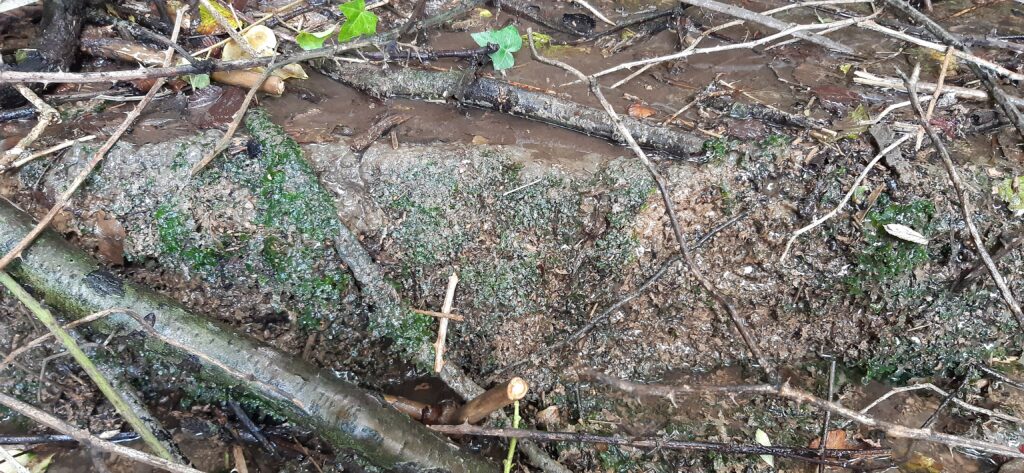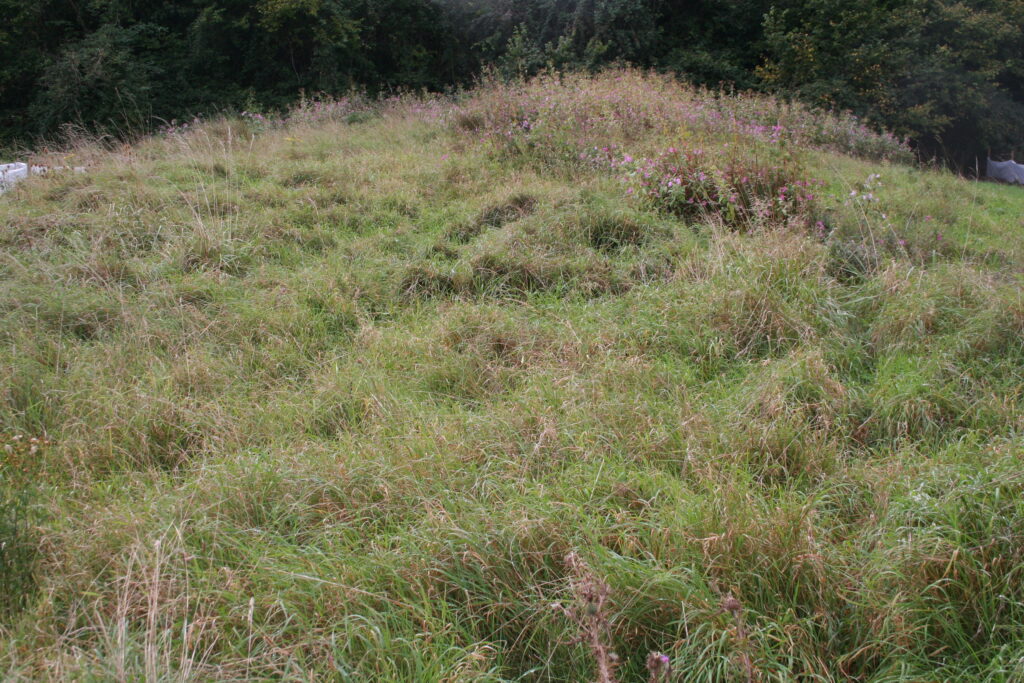What are Tufa Flushes?

Tufa deposits, 2023
The City of Bath is famous for its Limestone-based buildings, giving a rich, honey-coloured feel to the City. But the limestone in the ground is also permeable and dissolves in slightly acidic water. Where this water emerges as springs from the hillside, deposits of the mineral called tufa start to form – the calcium carbonates precipitate from the water and form a soft spongy rock. Over time, a series of dams can be formed, trapping nutrients and creating a base for the proliferation of a very specific habitat, supporting marginal plants, amphibians and invertebrates.
So special is this formation, that Bath & North-East Somerset Council’s ecologists pronounced it as of county-level importance.
In fact, this is the only site within Bath that exhibits this phenomenon. And it comes about because of two special conditions.
Firstly, the site is the natural drainage slope for the hill of Odd Down, a large highly-developed flat-topped hill to the south of the city. Rainwater from this hill, gathered from the hard developed surfaces, naturally drains down the slope through permanent surface streams. One of these feeds the nearby childrens’ park at Moorfields (‘the Sandpits’).
Secondly, the site has lain undisturbed since the second world war, free from cultivation and only occasionally grazed.
This has allowed the springs to develop to their present state.
By 2023, these deposits are clearly visible on a stream as it enters the field via a small cascade. The small granular accretions are easily disturbed, but eventually harden into rock.
In fact there are two sets of springs and 3 tufa outcrops. The major tufa area in the centre of the site has been joined by newer areaa at the eastern and western ends, caused originally by the excessively wet winters around 2013, which led to new semi-permanent surface streams ( some of which found their way into local residents gardens). While these have now (2020) subsided , the formation of a new tufa area appears to be permanent. Tufa is very susceptible to changing ground and water conditions, so may appear and disappear in times of extreme flooding or natural or forced changes in water chemistry. But the plants and animals around these areas are consistent. Over time, the calcium deposits harden and become semi-permanent. So it is common in early stages of formation for the deposited layers to disappear and then re-appear some time later.

For more information on the springs, see our Geology page.
Other local Tufa formations.
Leigh-on-Mendip
There are a number of tufa springs on the Mendip Hills but the one emerging below Whitehole Hill is one of the best example. The water from the spring sinks beside the road in Pitton Street about 800 metres to the south and then travels underground through the limestone before resurging. Whilst underground the water becomes saturated with calcium carbonate (limestone). After emerging from the spring the water flow over pebbles rich in iron and other minerals. After running for about 200 metres enough of these minerals are dissolved to cause the calcium carbonate to be precipitated as a soft creamy coloured spongy rock which covers the moss etc to form a series of dams (gours). This deposition occurs in quite a short section of the stream and produces a series of small cascades.









 Total views : 89358
Total views : 89358
